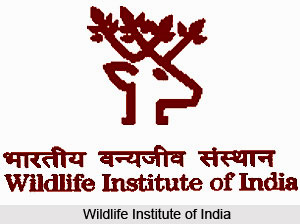 The Wildlife Institute of India (WII) is an internationally acclaimed institution which was set up in 1982. It offers training program, academic courses and advisory in wildlife research and management. The Institute is actively engaged in research across the breadth of the country on biodiversity related issues. The campus of the Institute has been carefully developed to create state of the art infrastructure which encourages scholarly work. The Institute was mainly set up with the sole mission of nurturing and developing wildlife science and to promote its application in conservation, in consonants with the country`s cultural and socio-economic milieu. The institute strives for recognition as a `centre of excellence` for Wildlife Conservation in National and International forum.
The Wildlife Institute of India (WII) is an internationally acclaimed institution which was set up in 1982. It offers training program, academic courses and advisory in wildlife research and management. The Institute is actively engaged in research across the breadth of the country on biodiversity related issues. The campus of the Institute has been carefully developed to create state of the art infrastructure which encourages scholarly work. The Institute was mainly set up with the sole mission of nurturing and developing wildlife science and to promote its application in conservation, in consonants with the country`s cultural and socio-economic milieu. The institute strives for recognition as a `centre of excellence` for Wildlife Conservation in National and International forum.
Aims and Objectives
The aims and objectives of the WII are as below:
* Build up scientific knowledge on wildlife resources;
* Train personnel at various levels for conservation and management of wildlife;
* Carry out research relevant to management including the development of techniques appropriate to Indian conditions;
* Provide information and advice on specific wildlife management problems;
* Collaborate with international organizations on wildlife research, management and training;
* Develop as a regional centre of international importance on wildlife and natural resource conservation.
This article is a stub. You can enrich by adding more information to it. Send your Write Up to content@indianetzone.com




















